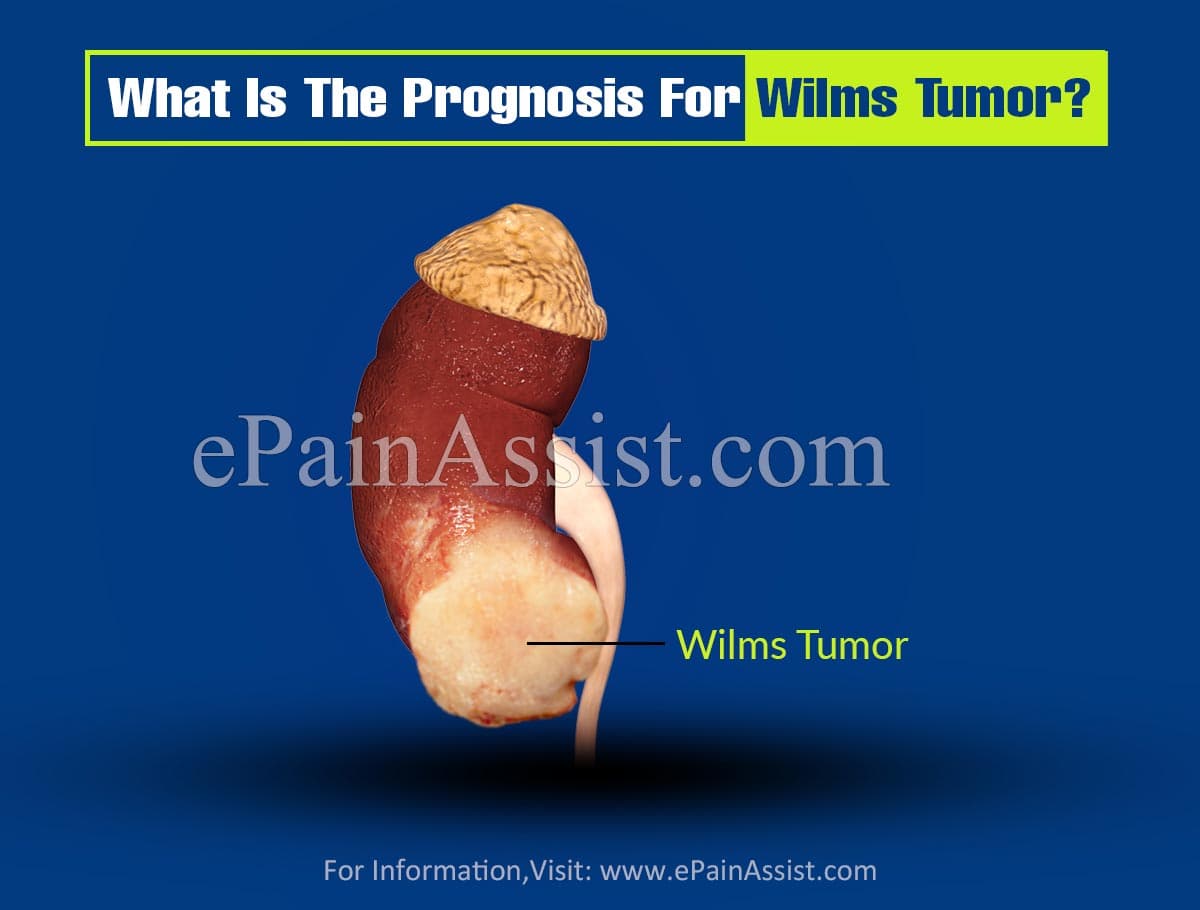In children, Wilms tumor is the most prevalent cancerous renal tumor. Progress in surgical and anesthetic management, use of advanced chemotherapy, and radiation therapy have resulted in significant survival rate improvements. Present therapies are trial based and big multi-institutional corporations are primarily taking the initiatives. Wilms tumor can be predominantly seen among young kids (mostly 3 to 4 years of age). The tumor is less prevalent in other age groups but may still appear in individuals of any age. Wilms tumor is usually more prevalent in girls compared to boys. Black children are at significantly greater risk than white kids, and the Asian children are at the lowest risk1,2.

What Is The Prognosis For Wilms Tumor?
Doctors often use survival rates while discussing the prognosis of patients. This is a standard norm which displays the percentage of patients with similar disease stage still surviving after a definite time period from the day of diagnosis. They can’t tell you precisely what’s going to happen to a particular patient, but they can assist you to get a better perspective2.
The 5-year rate of survival shows you the percentage (no of patients per 100) of patients survived at least five years following the diagnosis. For Wilms tumor patients, the 5-year rate of survival is 93%, but the rate differs depending on the disease stage3.
Stages Of Wilms Tumor
The staging of Wilms tumor is done on the basis of surgical outcomes, tumor cell assessment, and if the spreading of the cancer cells beyond the kidney2.
Stage I. The tumor can be discovered in one kidney and with surgery can be removed altogether.
Stage II. Cancer occurs in the kidney along with surrounding blood vessels, soft tissues, and fats. It may affect the renal sinus, the component of the kidney through which fluid and blood enter and leave the organ. With surgery, the complete removal of the tumor is possible.
Stage III. Cancer occurs in areas close to the kidney and complete removal by surgery is not possible. The tumor often spreads to the neighboring lymph nodes, organs, blood vessels, and different parts of the abdomen. Spreading of Stage III Wilms tumor remains limited to the abdomen.
Stage IV. Spreading of cancer takes place to other more remote organs, including the brain, bones, liver, and lungs i.e. organs outside the abdomen.
Stage V. Here the presence of cancer cells located simultaneously in both kidneys and the staging of the tumor is done separately for each kidney.
Recurrent. This type of Wilms tumor returns after successful completion of the treatment. It may return to the same region where it initially appeared, or to another location in the body. In these cases, your doctor usually conducts some more tests to understand the recurrence extent.
Refractory. This type of Wilms tumor never shrinks during the course of treatment2.
The 5-year survival rate for stage I, II, and III Wilms tumor patients having favorable histology is 95% – 100%. For stage IV and V Wilms tumor patients the 4-year rate of survival is 85% – 100%. The lower rate of survival is observed for patients having focal anaplastic histology for all the stages and the range is 70% – 95%. Further low survival rates can be seen in patients having diffuse anaplastic histology with survival rates in the range of 30% – 85%.
However, survival rates are only estimations, and it is not possible to offer a prediction of prognosis of the disease for a specific case. The prognosis of each patient may differ depending on several factors distinct to the particular patient4.
Major Factors Of Prognosis
The tumor histology and stage are the two most significant factors in assessing the prognosis of the patient. Better prognosis is associated with favorable histology compared to anaplastic histology. A low-stage tumor is generally more possible to be managed effectively compared to the high-stage tumors, particularly for the ones having anaplastic histology4.
But there are other considerations as well influencing the prognosis, including patient age, and how the tumor is responding to therapy. The tumor histology and stage knowledge will assist the physician in advising a specific strategy of treatment4.
Conclusion
Staging procedures and therapy schemes differ globally, although the results are very comparable with over 85% cure rate. Current Wilms tumor management attempts are therefore focused on limiting treatment and related toxicity without sacrificing healing rates. Continuous development and involvement in global trials will enhance the matching of therapy requirements with prognosis, decreasing most of the long-term complications. The emergence of molecular markers to determine the severity of the disease and enhanced functional imaging may offer better outcomes.
- Lowe LH, Isuani BH, Heller RM, et al. Pediatric renal masses: Wilms tumor and beyond. Radiographics. 2000;20(6):1585-1603.
- Kaste SC, Dome JS, Babyn PS, et al. Wilms tumour: prognostic factors, staging, therapy and late effects. Pediatric radiology. 2008;38(1):2-17.
- Lubahn JD, Cost NG, Kwon J, et al. Correlation between preoperative staging computerized tomography and pathological findings after nodal sampling in children with Wilms tumor. The Journal of urology. 2012;188(4S):1500-1505.
- Chintagumpala M, Muscal JA, Pappo AS, Kim MS. Treatment and prognosis of Wilms tumor. UpToDate; 2016.
Also Read:
